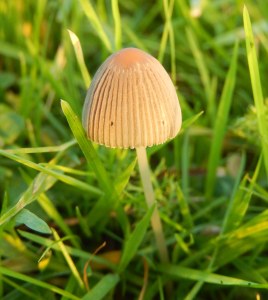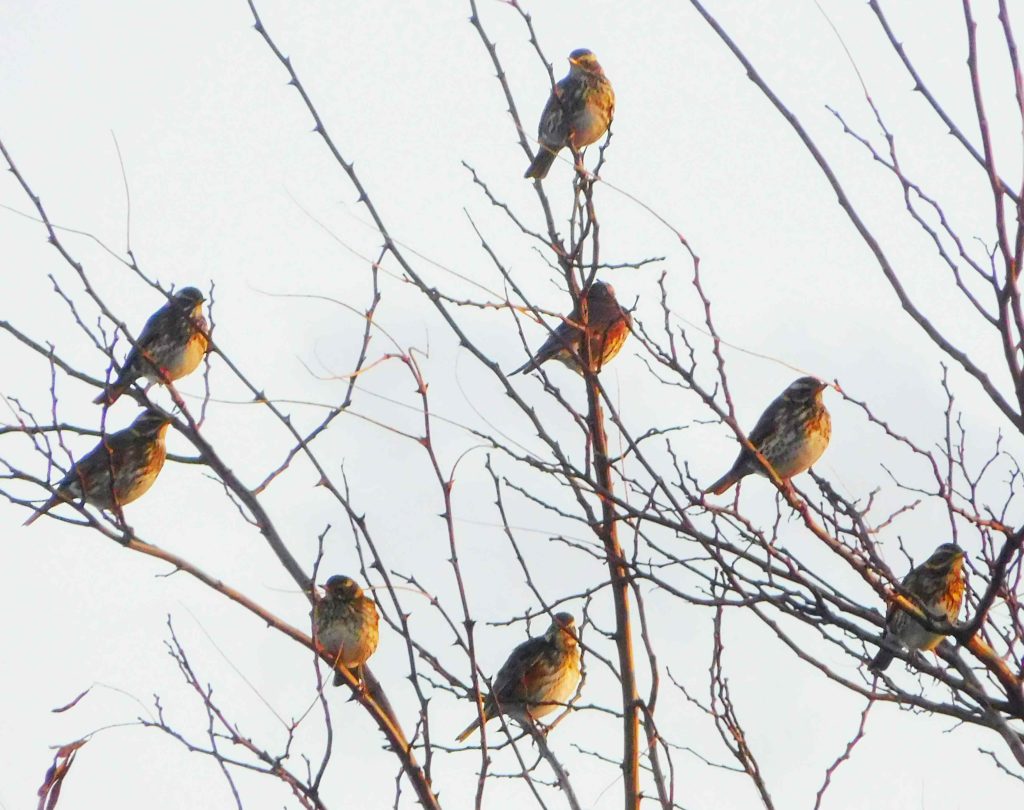
Tag Archives: Redwing
Warm Wet Winter Day at Wraysbury Lakes
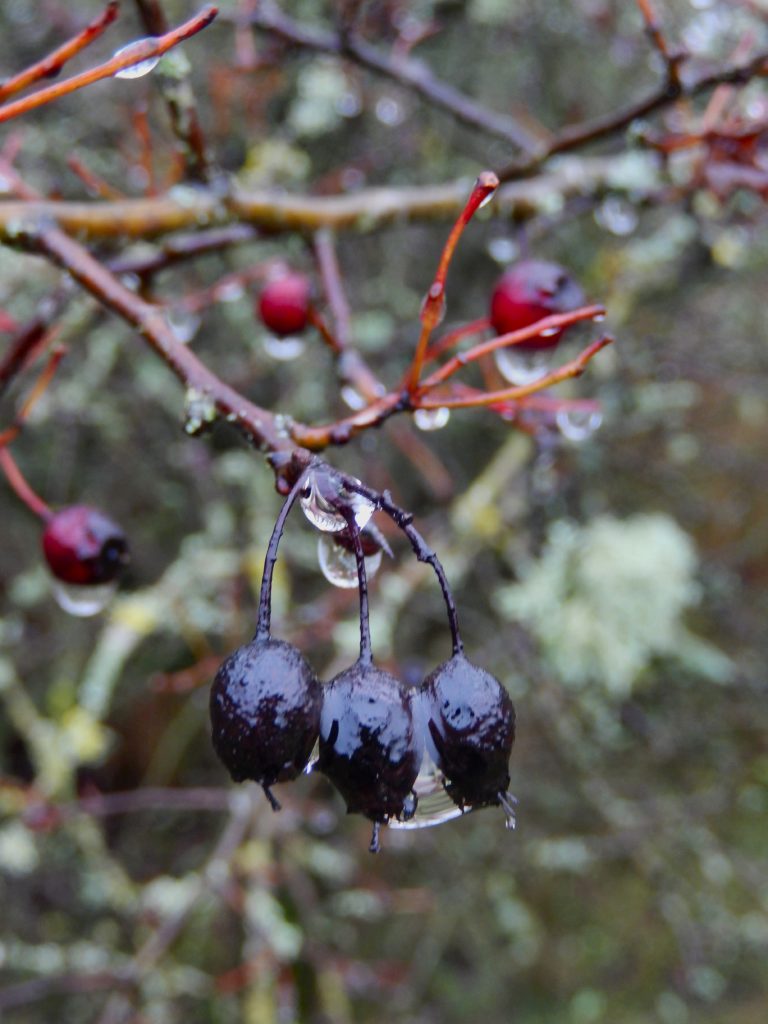
The day was exceptionally warm after the chilly winter weather. The hedgerow plants dripped gently. I liked the colours and light on these blackened rose-hips, still somehow looking invitingly fruity.
The path too was covered in blackened leaves, wet and slippery. On the lake, half-a-dozen Goldeneye, a couple of Pochard, a few Teal, some Tufted Duck, a few Mallard. Apart from the ducks, a couple of Cormorants, two young and very white Great Crested Grebes. On the meadows, a Green Woodpecker, flocks of Goldfinches, scattered Redwing and Fieldfare, a flock of Carrion Crows.
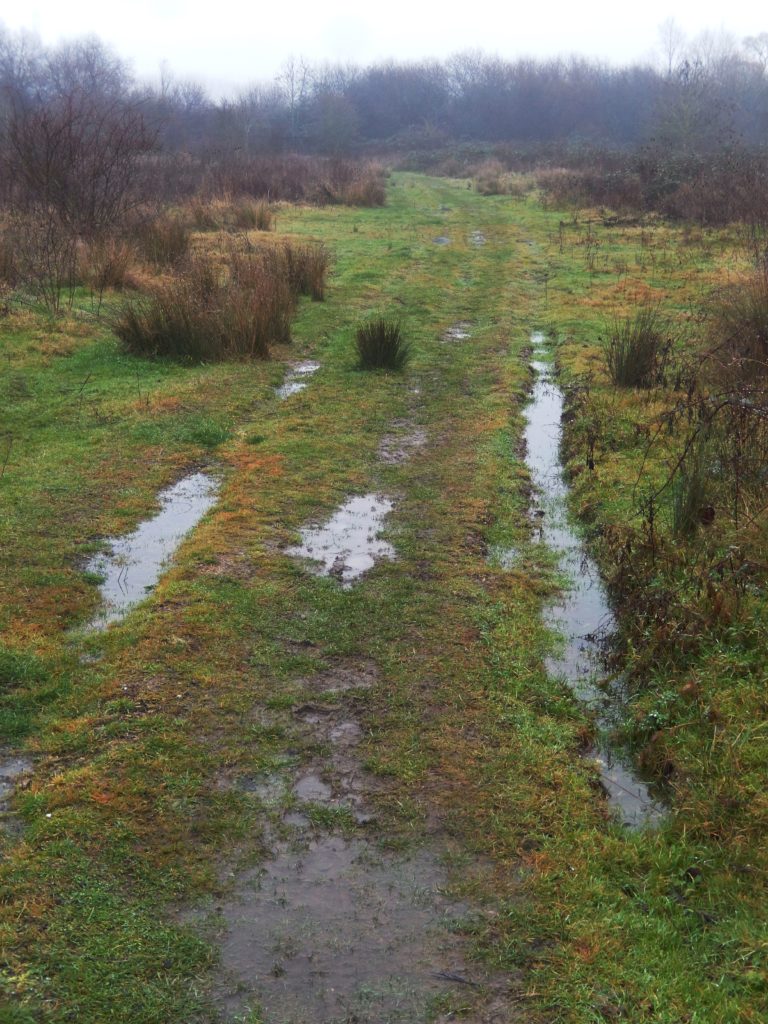
Winter Thrushes in the Fog
With another day of freezing fog, very dangerous on the roads, nature is telling us that, yes, global warming or no, it’s winter. The false acacia, totally leafless, whirs with activity. A big wood pigeon sits impassively, ignoring the small passers-by. Within a few minutes, these include 3 goldfinches, keeping well away from each other in the branches; 2 male blackbirds, similarly, their heads high on the lookout for competitive activity; 4 ring-necked parakeets, never settling for more than a moment, jumping up squawking at the slightest provocation; 2 redwings, handsome with their contrasting eyestripes; 1 fieldfare, markedly bigger, and a handsome bird when seen in crisp winter sunshine rather than today’s murky fog. A few minutes later, a blackcap appeared: still a bird that we think of as a summer visitor, though a few pass through in winter from colder places. Later still, a great tit jumped in and wriggled about; and a little flock of 6 starlings blew in for a few minutes, sadly diminished from the sort of flocks I remember: and even this local flock used to have 7 members.
The effect as birds appear from and vanish into the gloom is rather of one of those popular tales physicists tell to try to make the public feel they understand what nuclear physics is all about: particles and antiparticles are ceaselessly created by the vacuum, and as continuously meet each other and annihilate, returning to their matrix, the apparently endlessly creative fog, which one would otherwise have mistaken for chilly nothingness.
Winter Visitors to Otmoor … or is it Spring?
Here in town, the daffodils are in bloom, the bluebells are coming into fresh green leaf, and the temperature is 10 C, so it might almost be early spring. And this morning I heard the chi-chi-chi / zheeeee! of a singing male Greenfinch, getting into the spring courtship season. But some trees on the same common are full of twittering Redwings, winter visitors from the frozen North, a cheerful and bright winter sight.
Out in the countryside, it looks much more like Winter, the trees as bare as they ought to be in early February, the only flowers a few tufts of snowdrops near the pleasantly lichened reserve signboard at RSPB Otmoor. The reserve has grown steadily better from its early day, with more and more wet scrapes, pools, and reedbeds spanning something like a mile of Otmoor’s wide, flat expanse.
A Kestrel hovered overhead; Bramblings and Chaffinches lurked in the hedges; Redshank called in the distance. Red Kites drifted by over the trees. Seven Snipe jumped up, screeching, from wet grass and zigzagged to a muddy island. A Cetti’s Warbler sang from almost under our feet, invisible.
The luxurious hide revealed numbers of Wigeon, Shoveler, and Teal, and a flock of Linnets with a few Goldfinches feeding on the grass in full view. Yellowhammers, Reed Buntings and more Linnets sat in the bushes. The trees were full of twittering: I soaked up the soundscape with hands cupped to my ears.
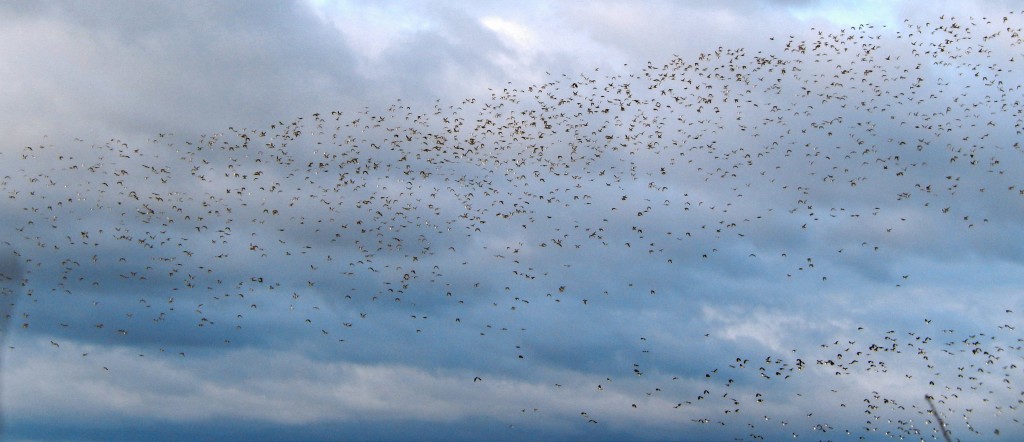
When a Buzzard came over, some 3,000 Lapwings and a similar number of Golden Plover got up, all glinting gold as they turned together in the sunshine.
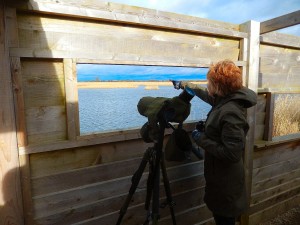
Over to the north, a Marsh Harrier dropped into the reeds, got up again and scoured the reedbed for signs of prey, its broad brown wings slightly raised, its broad tail quiet unlike that of the Red Kite that wheeled past it.
Warm Winter Spell at Wraysbury Lakes
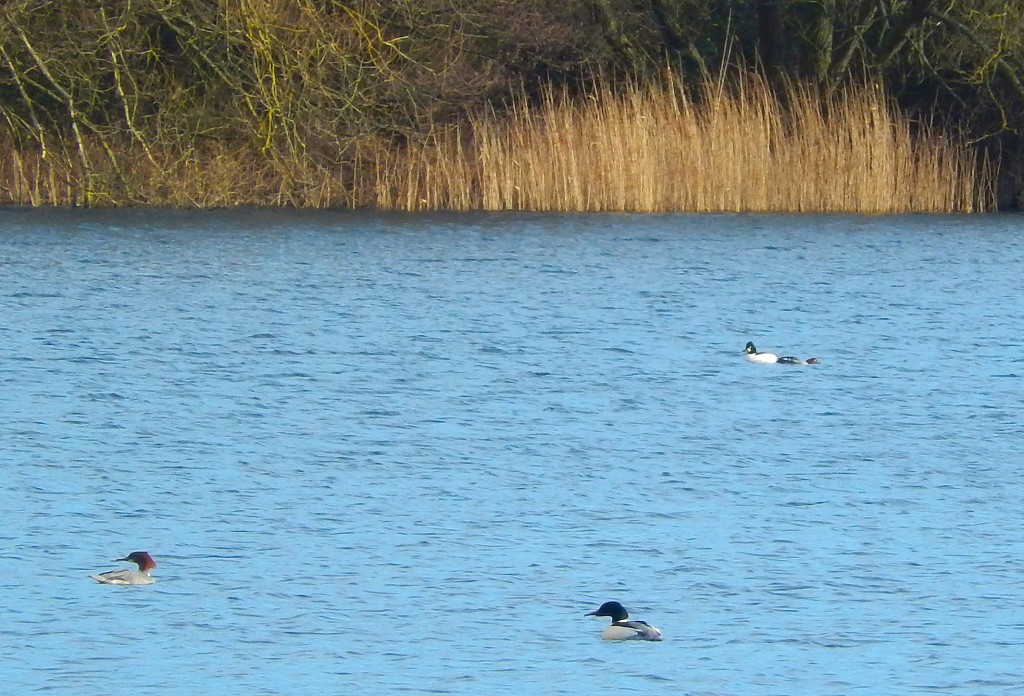
After the bitter cold of the New Year, down to a surprising -12C in London, suddenly spring (as it were) is back in the air, and the Daffodils are resuming their progress towards full bloom in gardens and on roadsides.
The warmth and sunshine tempted me out to Wraysbury. With the heavy rain and perhaps also the rapid changes of temperature, a large Poplar had fallen across the river, forming a minor weir.
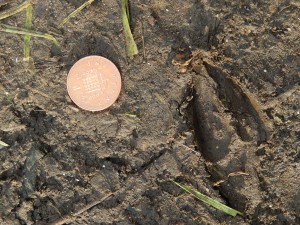
On the path, a Muntjac deer had left its tiny prints in the soft mud. Unlike a lot of other mammals, at least this one is readily identifiable from its print, the two small sharp slots of its slim feet not mistakable for anything else.
The lake, which had been full of birds as big as Swans last time I visited, was almost empty: a few Coots, some Great Crested Grebes, a Black-Headed Gull, a few roosting Cormorants, a few Tufted: and happily two of the area’s specialities, three pairs of Goosander, and nine Goldeneye (including three males).
A Kestrel hovered and dropped slowly after a small mammal in the long grass. A Redwing flickered away around a corner. A Song Thrush sang sweetly from a thicket. One or perhaps two Bullfinches gave their distinctive “Deu” call from the middle of a bush. Half-a-dozen Fieldfares chattered and skittered about from the top of one bare thornbush to another. A few Wood pigeons and Crows looked out warily.
First Winter Thrushes at Wraysbury Lakes
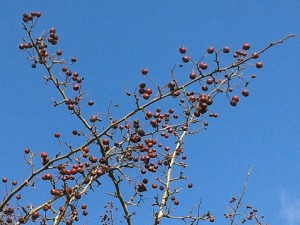
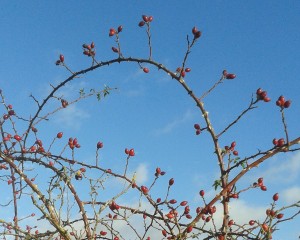
No wisecracks about Hips and Haws and keeping warm on chilly winter days! This morning it was actually more autumnal than wintery, with bright blue skies setting off the deeply red berries, the rosehips scarlet, the hawthorn berries crimson.
The birdlife however did give a hint of winter to come. The first half-dozen Redwings squawked softly and burst from the bushes in their peculiar way, twisting suddenly in flight to get out from between the branches, flapping noisily as they accelerate out of cover. A single big Mistle Thrush flew from higher up in a different tree.
A flock of Goldfinches, some Dunnocks, a Robin or two, a Blackbird, eight Magpies, a rapid Ring-Necked Parakeet, a Carrion Crow or two, and a few Black-Headed Gulls appeared here and there. A Sparrowhawk searched over the Poplar trees for unwary prey.
Down on the lake, too, the winter ducks are starting to arrive. There are good numbers of Gadwall (maybe 30) and Wigeon (50 or so) as well as Tufted (50) and Shoveler (100). A dozen Cormorants, a hundred Coots, a few Mallard, a couple of Mute Swans (where did they all go?), a few Canada Geese (ditto), and a solitary Great Crested Grebe made up the rest.
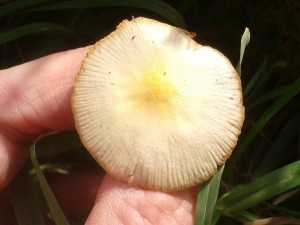
As a final treat, there was a slender, delicate stalk of the Yellow Inkcap, Coprinus auricomus, in the grass.
Winter Flocks at Wraysbury
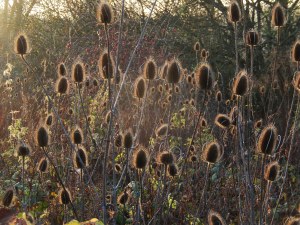
Finally, right at the end of November, autumn is starting to look something like winter. Even now, and even with a light easterly wind, it is mild, almost too warm for any sort of winter coat.
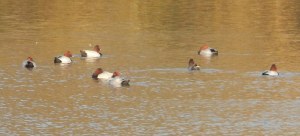
But winter flocks of birds have at last arrived: 45 Pochard on the lake, handsome with their reddish heads contrasting with pale grey backs; dozens of Goldfinch in the nearly leafless trees, twittering ceaselessly; a dozen or more Fieldfare in the thorn bushes in the horse field; a few Redwing in another thorn bush.
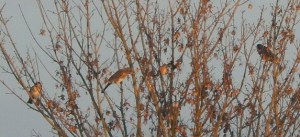
The low sun made the dried flowerheads of the Teasels beautiful. A single Pleated Inkcap gleamed among the short grass and muddy hoofprints.
